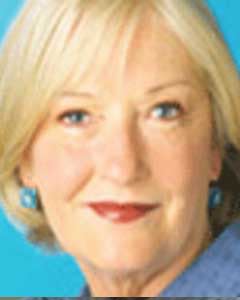Wherever the British settled, the Church of England left its indelible mark on education. Today, Canada has many venerable independent schools rooted in the Anglican tradition and dating back to pre-Confederation days. To name a few: King’s-Edgehill in Windsor, N.S., established in 1788 by the area’s first Anglican bishop; Bishop’s College School in Lennoxville, Que., opened in 1836; and Trinity College School in Port Hope, Ont., started in 1865.
But new Anglican schools keep springing up, backed by parents who want their children to learn to high standards in a context of Christian values. One relative newcomer is Christ Church Cathedral School in Victoria, a junior kindergarten to Grade 8 facility that opened its doors in 1989 in a premier location right behind the cathedral on Vancouver Street.
Its fundamental principle is to encourage each child to grow in the light of Christ. “Our Latin motto is lux mundi, light of the world, just as Jesus was the light of the world,” says Stuart Hall, head of the 23-year-old, 210-student, 30-educator school. And the concept of “let your light shine” is applied in daily lessons. “We ask students what they’re doing to make their light shine out,” says Hall. “Even our gym strip has a candle on it!”
One of the perks of the school’s location is using the cathedral each week for Wednesday morning chapel. That space provides a reverence-inducing backdrop when the older students act out Jesus’ parables during the service. “It makes the stories come alive for everyone, and sometimes even the kindergarten pupils take part,” says Hall. Another advantage is occasional visits from Bishop James Cowan, who has an office in the same block.
Each morning begins with a prayer or, if a non-Anglican teacher prefers, a spiritual reflection for the day. “As our bishop says, the Anglican tradition is a large tent, and we welcome anybody in it,” says Hall. Prayers are said at Monday assembly, grace is said before breaking for lunch, and all students, regardless of their religious identity, take Christian religious instruction that follows the cycle of the three-year liturgical calendar, thereby exposing them to both Old Testament and New Testament teachings.
The school, which has several Jewish and Hindu families, makes plenty of room, however, for other faiths. “One year, our Jewish families brought in a menorah and talked about Hanukkah. Then they served traditional potato latkes to the entire school,” says Hall. “The students learned how the Jewish tradition connects with the Christian.” The school recognizes other religions as well, honouring their special days and mounting slide shows of religious observances in different parts of the world.
In accordance with its credo of shining your light out into the world, Christ Church has a strong focus on collaboration and community service. Last year, more than half of its 55 senior students sat on the student council. After doing some research, its members made presentations to the school and petitioned it to support three local charities: a start-up environmental group, the Society for the Prevention of Cruelty to Animals and a medical charity. “The year before, the school selected three charities for children’s illnesses in support of students at the school who suffered from these maladies,” says Hall.
Needless to say, Cathedral students are dab hands at fundraising-holding sock hops, bake sales and bottle drives. Very popular is dress-down-in-mufti day when the kids make donations in return for doffing their uniforms and wearing civvies to school. “They plan something almost every month, and last year raised about $5,000 for charity,” Hall says.
Not far from the school, the Rainbow Kitchen serves meals to street people and other low-income citizens. On the first Tuesday of each month, Cathedral’s Grade 8’s descend on Rainbow to chop vegetables, plate food and clean up. The experience teaches them that people of low income are real people who are more than their impoverished circumstances and not just forgettable urban debris. The pupils of Grades 1 and 7 read and sing to seniors in a nearby residence.
“Community service is a powerful tool for learning, especially at the middle school level,” Hall says.
On Oct. 16, the school participated in the UN’s World Food Day, delivering groceries to Victoria’s St. Vincent de Paul Society. “They’re learning that Christianity is about connecting with others,” says Hall. And thanks to its location, the students can easily connect with the cathedral parish and the larger diocesan community.
Last year, five students were baptized at the cathedral. When the dean told one young candidate for baptism that he’d have to start going to church now, the lad replied indignantly, “I’ve been coming to church every Wednesday since kindergarten!” For some students, notes Hall, the school’s Wednesday chapel services have been their only opportunity for religious experience, but clearly they have had a powerful effect on some.



